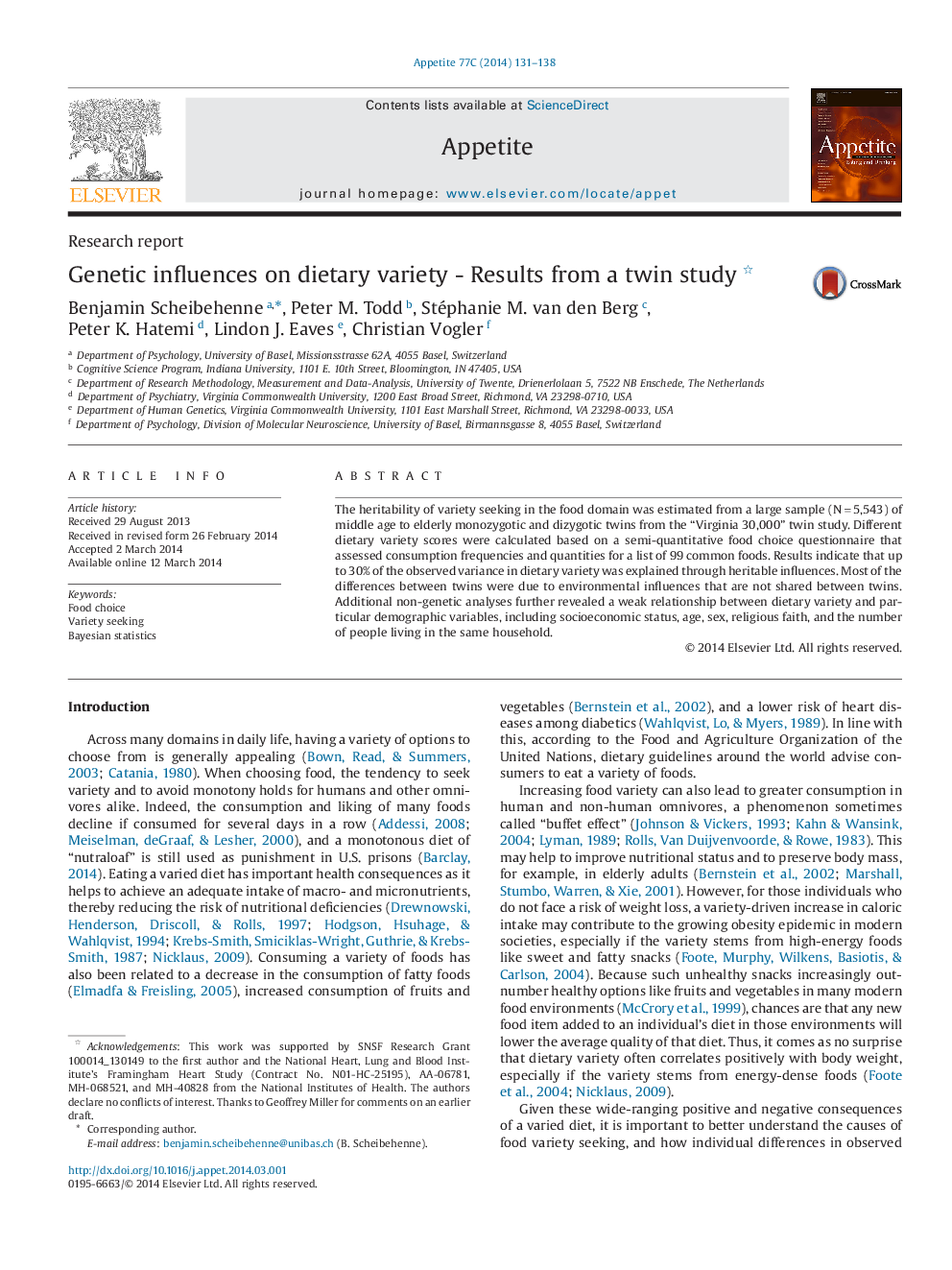| Article ID | Journal | Published Year | Pages | File Type |
|---|---|---|---|---|
| 7310343 | Appetite | 2014 | 8 Pages |
Abstract
The heritability of variety seeking in the food domain was estimated from a large sample (Nâ=â5,543) of middle age to elderly monozygotic and dizygotic twins from the “Virginia 30,000” twin study. Different dietary variety scores were calculated based on a semi-quantitative food choice questionnaire that assessed consumption frequencies and quantities for a list of 99 common foods. Results indicate that up to 30% of the observed variance in dietary variety was explained through heritable influences. Most of the differences between twins were due to environmental influences that are not shared between twins. Additional non-genetic analyses further revealed a weak relationship between dietary variety and particular demographic variables, including socioeconomic status, age, sex, religious faith, and the number of people living in the same household.
Related Topics
Life Sciences
Agricultural and Biological Sciences
Food Science
Authors
Benjamin Scheibehenne, Peter M. Todd, Stéphanie M. van den Berg, Peter K. Hatemi, Lindon J. Eaves, Christian Vogler,
